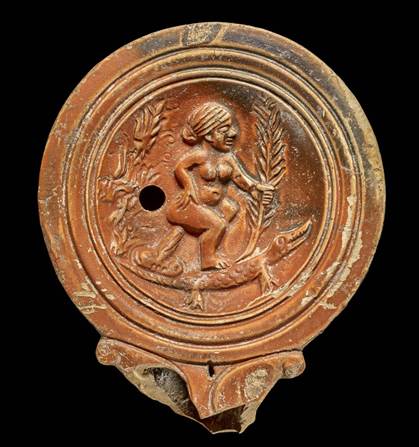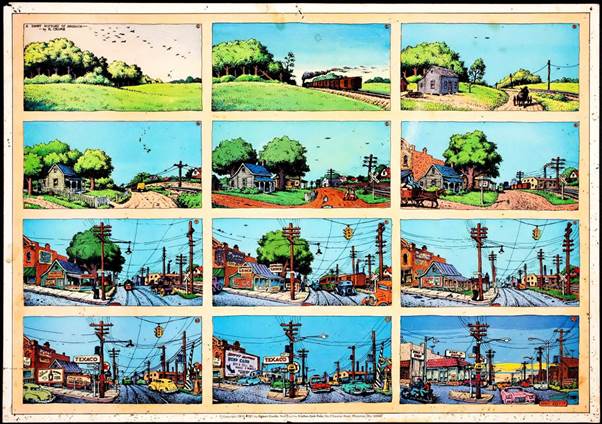
Acid plus metal equals salt plus H2 - pretty groovy, huh? It’s astonishing how far a little of that goes, with the underlying periodicity of hydrogen, oxygen, carbon and the metals. You see, as a trainee scientist one’s mind is quite impressed by these things but, as I said, you don’t need a lot of information to know a lot. The problem is when “they” become ego-obsessed to know everything, but you can’t do that without entering an empirical system where there is a logical order to everything.
Everything is essentially the same and everyone thinks the same, even though there is no proof an empirical system of pure order exists. If you go back to ancient Rome, the difference is breathtakingly obvious. Roman engineers don’t have any of the knowledge in Hutchinson’s Pocket Chemical Dictionary, all they have is an empirical tradition, the practice that lime serves to bind volcanic sand into cement. They record the practice in the same way ancient Hindus recorded electroplating (Hyborian Brisge 13)
Rome does not have modern empiricism; that comes with a logical system (Tales of Faith 4,10). What Rome has is a fabulous tradition of structural engineering using lime, volcanic ash, cement. See Hyborian Bridge 2 which makes a big thing of the “merging” of Roman bridges and aqueducts with water channels and rugged landscape.
A lot of the best works - massive aqueducts between hills, the Danube cantilevered road - are bound to nature in a rather elegant fashion, engineering that works with the subtle symmetries of nature. An empirical tradition is not different to nature – it can’t be; whereas the empiricism of a logical order has to assume there is a sameness to things (IE supersymmetry, see prev.) In other words, it assumes order without freedom.
Now, if you go back to the labyrinth, you see there is both order and freedom. There is an intricate freedom of expression you could liken to baroque architecture (and music). If there is no labyrinth, then we are no longer in the same world the ancients were. We are actually in a world of pure routine and pure order, as if we’d stepped out of Hutchinson’s Pocket Chemical dictionary.
But, chemistry is only half of reality. There is also the subtle symmetry of nature, the asymmetry or the higgledy-piggledy-ness. If nature had a definite symmetrical order then it might be routine. But there are asymmetries and, as Bruce Lee says (Chapter 9), broken rhythm that a trained body uses in action to express itself in time – the moment. Lee is very insistent that there is no routine in the moment, just action. If action is not routine, then it cannot be studied by a science of order; the spontaneity of action is simply replaced by a rule-based order, such as Darwin’s struggle (see Pictorial 5)
The ancient world has no prescriptive rule-based system of thought, and is composed of such opposites whereas the modern one isn’t. The sun and the moon are fairly symmetrical (in size), but they are still very different and essentially inhabit different universes.
Which brings us to Tros of Samothrace and his hedging with the monster that is Rome.
THE CIRCUS IS LEAVING TOWN
Tros encounters the fantastic contradictions of a Rome that is patrician at its core while sanctioning the savage vulgarity of the Circus for the untamed plebes. “The dogs are barking on the street” indeed. There is a lot to marvel at in the eternal city, and I’ll pick on a few choice bits from Tros’s circuitous affairs. There is often the sense of some great organism that is implacably bound to its heroes, to the Vesta, the eternal flame and the dignitaries of the Forum. Though he encounters individuals, there is always the sense of some greater, mystic order. Of course, a mystic order is not modern order; it contains subtle symmetries that are found in the city itself.
There were temple lights, and over one or two streets where the night life swarmed there lay a stream of hazy yellow. Here and there a light showed through an upper window, and there was a suggestion rather than the sound of babelling tongues; Rome looked, in the near distance, like a crouching monster, and the ear deceived itself with what the eye conveyed. (page 800)
The nighttime mystique of the ancient power is wonderfully conveyed, as when Tros forays with his men to the Vesta.
..in the night below the frowning shadow of great Jupiter’s Etruscan fane that loomed over the Capitol, when only lanterns and the lonely guards disturbed the solitude, and moonlight shone on rows of statues of the men who had drenched Rome in blood.. of stern men who had made her laws and stalwarts who had broken them but never dreamed of Rome a s less than their triumphant mother – understanding swept over a man, and even Tros stood still in admiration, hating while he wondered.. The Northmen gazed and hardly breathed. (page 858)
Rome in many ways behaves like a medieval court, and the current favorite of Plebes and Forum alike is the fabulous Helene, late of Ptolemy’s court at Alexandria, and bearing some resemblance to an athletic Cleopatra

Terracotta lamp with obscene caricature of Cleopatra
In the midst of the mosaic, sunlit floor, half-naked and aglow with exercise, Helene fought with net and trident against a Nubian armed with a blunted sword. There were great blotches on her skin where he had smitten her, but he was backing away warily, circling toward her right to keep clear of the sharpened trident that she held in her left hand. Suddenly, as Tros strode in, she lunged with the trident. (page 819)
The courtiers’ concern with balance and proportion of head to body is also delightfully evoked in Helene’s artful exclamations and movements.
She curtsied to the marble floor, the rhythm of her movements bringing a burst of applause from the gilded youths, who cried to her to repeat it.. “Kings go to Rome’s back-doors, but I see you are neither a fool of a king nor a louse with a vote for sale!” Again she curtsied, three times, throwing back the dark hair from her forehead with a toss that suggested blossoms nodding in the wind. (page 820)
This is Rome, and this is a medieval city-state. Everything is proportionate – the head to the body, the physique, grace (Pictorial 1.) Yes, Tros meets political figureheads, but no, they are not disembodied and detached from the milling throng.
But such talk only vaguely interested them. They had the absolute contempt for politics peculiar to rich men’s sons. (page 821)
Caesar is ambition itself; Pompey a devious manipulator of crowds; Cato honest to a fault – but beyond them all is the mystery of the city itself. The mystery that sees its highest expressive form in the eternal flame and the Vestal Virgins.
“Virgo Vestalis Maximus!” Lover of all pageantry, and scornful of life that was not drama, he omitted no vibration from his voice that might add to the scene’s solemnity.. Tros.. spoke exactly seven syllables in a language neither Orwic, nor the lector, nor the Vestal’s servants understood. But the Vestal drew aside the pallium that half-concealed her face – not speaking – pale and as severe as chastity, her middle-aged patrician features hard as marble in the moon’s rays. “In the Name I may not utter, audience!” (page 859)
Thus Tros gains admission to the inner sanctum of the VVM herself. An occurrence of pure mystique.
They stepped on marble into a dim magnificence. An atrium adorned with columns and the statues of dead Vestals faded into gloom, so that the walls were hardly seen.. Dark tapestries receded into shadow.. A bell, whose note was like the drip of water in a silver basin, rang once and a curtain moved. In dim light from the lanterns near the canopy two Vestals.. entered and the women rearranged the folds of their white pallia as they were seated. (page 860)
The pure allure of the religio-culture is evoked magnificently, and without magnificence where are the symbols one aspires to? Our modern lives are surrounded by signs, but without the mystique of what worth? Mystique is not of the mind, it is of the subtle intricacies of head and body, psychic strength in physical performance, in oratory, in the drama afforded by portico and pillar.
So, has reading Tros of Samothrace made of me an apologist for Rome? I understand more now her intricacies, how there is no tyranny, instead a set of complete contradictions, of sanctity alongside vulgar savagery, as at their arrival.
Runaway slaves, almost numberless, lived in the shadow of terror cast by stenching gibbets, on which scourged human bodies writhed or rotted near every cross-roads. (page 800)
The way I read it is as half nightmare, half dream, full of life and death, a vibrancy of physical lustre that I guess Hollywood romance aspired to. The city of stinking alleyways and glinting knives he describes is labyrinthine both physically, and in the daily ritual of political tittle-tattle that keeps the throngs at bay.
Physically it wouldn’t be out of place in a typical Hyborian setting. Politically, it seethes with rivalries, from the different levels of triumvirs (Caesar, Pompey, Crassus), Vestals, consuls of the plebes, praetor (Cato) through to the countrified elegance of aristocratic villas and down to the cauldron of plebes that look to their heroes of field or Circus.
Pompey, in the middle of the semicircle, swung down from his horse and strode with all a Roman dignity toward the entrance of the shrine, his white cloak that he wore against the dust of the day revealing as it fluttered in the wind flashes of his golden corselet.. In the porch before the shrine the slaves knelt, waiting until the Vestals’ women came, white-robed and wearing rosaries, to bear the gifts within.. all the women bowed to Pompey, he saluting with his right hand raised. He was a splendid figure. He stood like a god in armour – which was two-thirds of the secret of his influence; the mob roared satisfaction at the very way he walked. (page 878)
Rome is like an exercise in checks-and-balances – let’s not forget Marc Anthony and Cleopatra – with the ultimate victor being the city itself, the symbols of the city, the ultimate symbols being the eternal flame and its sanctified Vestals.
Rome is a force of nature, at one with the eagle and wolf; not head alone but physique and glamour. That is the power that these symbols represent. The astute politicians like Cato are always subservient to that power, a natural force with the labyrinthine qualities of a wood, or a tapestry.
In our societies, those forces are subservient to the head; in Rome, the head is subservient to natural forces. Therefore, the real Rome is labyrinthine, not easy to understand, secretive, and completely contradictory. Anything labyrinthine is immune to tyranny, and has a Capitol of virtue. If you compare that with America, R Crumb’s famous cartoon sums it up quite well

It’s a sequence that goes from crooked to increasingly straight – his 3 subsequent panels become more and more straight, apart from the one green utopia. Of course, America has its famous Constitution and the Capitol is still there. What’s changed is that the overwhelming majority are detached from the physical reality of wide open spaces. The physical allure of horse and rider, the harshness and endurance of trails, sounds and stench of beast and hollers of men, cattle-wise and free, are gone from affairs of state, replaced by a Martian (tentacled) head that knows not life or death, mere existence.
I KNOW YOU RIDER (lyrics start at 2:30, finish at infinity)
Home







